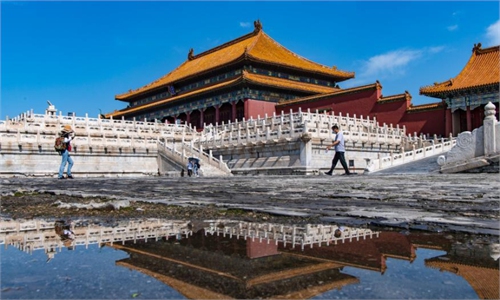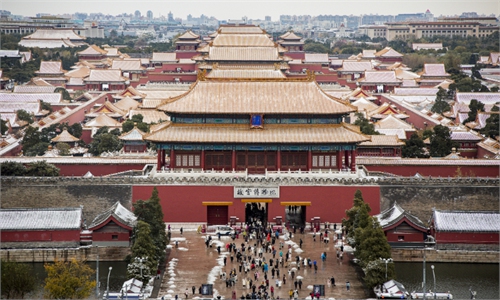ARTS / ART
Exchanges and integration make for a confident civilization: Beijing Palace Museum director
Reception room for Chinese culture
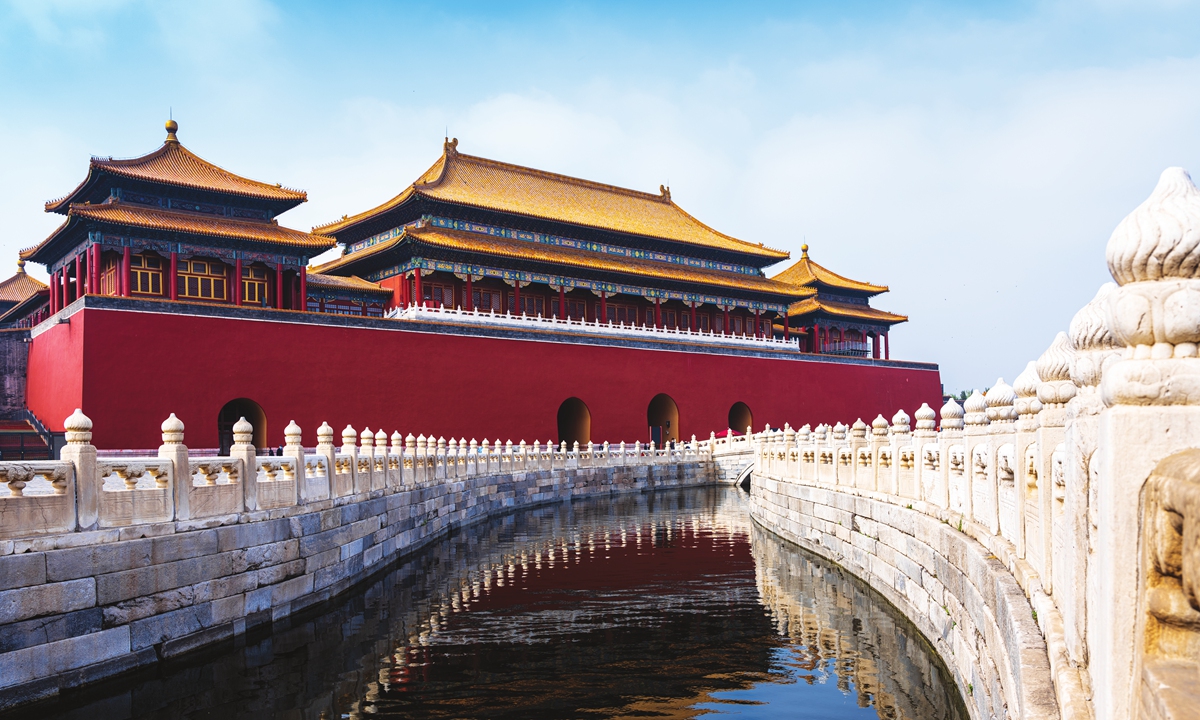
The Beijing Palace Museum Photo: VCG
The 5,000 years of continuous inheritance of Chinese civilization has given the Chinese nation firm cultural confidence. However, this cultural confidence does not come from a "closed culture," but was formed through constant interaction with other civilizations, said Wang Xudong, director of the Palace Museum in Beijing and one of the delegates to the 20th National Congress of the Communist Party of China (CPC), on Thursday.
Housed in the Forbidden City, which has a history of more than 600 years, the Palace Museum is one of the world's most visited museums. Together with the Palace Museums in Taipei and Hong Kong, the millions of cultural relics in the museum collection tell the stories of China's 5,000 years of civilization.
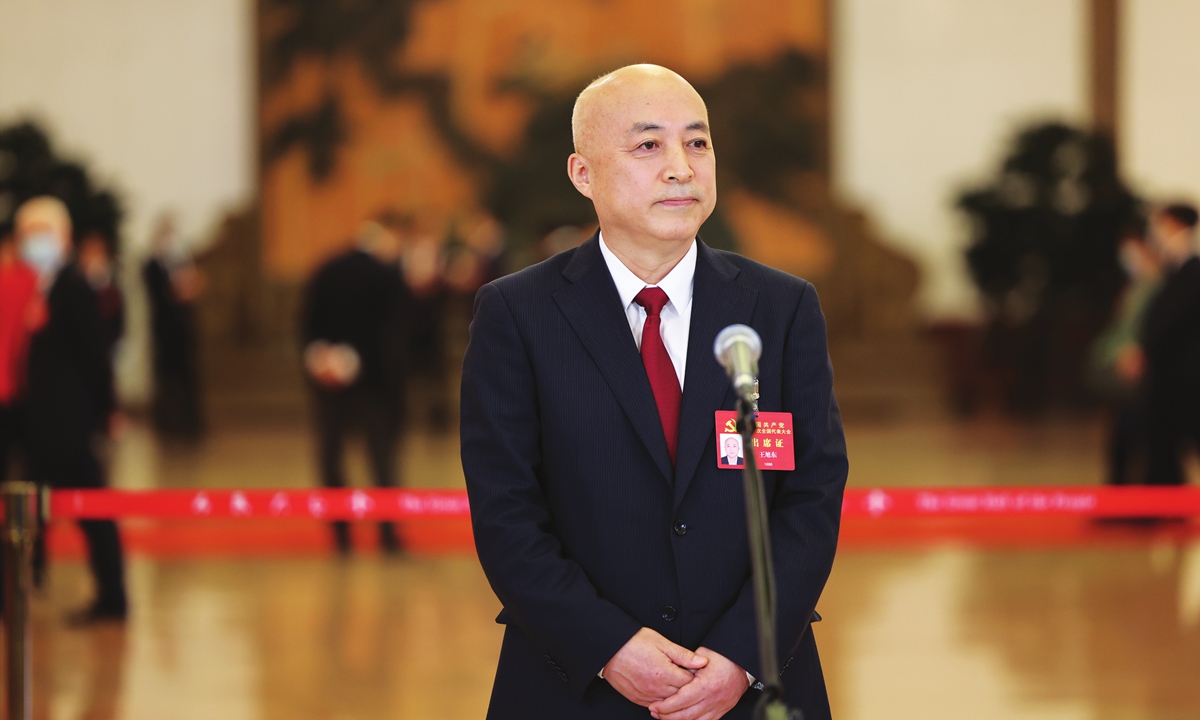
Beijing Palace Museum Director Wang Xudong Photo: VCG
Legacy for humanity
Although the Palace Museum is not yet 100 years old, the heritage under its purview, the Forbidden City and its vast collection of cultural relics that includes ancient relics, artworks and historical documents, is the carrier of China's 5,000 years of civilization.
The museum bears the historical mission of inheriting and promoting the excellent traditional culture represented by its collection.
"They are not just the legacies of China, but also belong to all human beings, because these heritages were left to us by all mankind, they are just distributed in different countries. We need to care for them, respect them, explore their value, and learn from them," said Wang, a veteran culture worker with more than three decades of experience.
"In-depth cultural exchanges and dialogues will make it happen, creating a better world."
These exchanges are not just limited to exhibitions of cultural relics from different countries, but also include collaboration on digital exhibitions. Over the past 20 years, the museum has completed the digitalization of 600,000 of its cultural relics. Over 1 million more are expected to be digitized over the years at an average rate of 75,000 items per year. The digitalization of the collection is not only an "easy way for the public to learn about these relics, but also a platform for the whole world to learn about Chinese culture through multi-language content," said Wang.
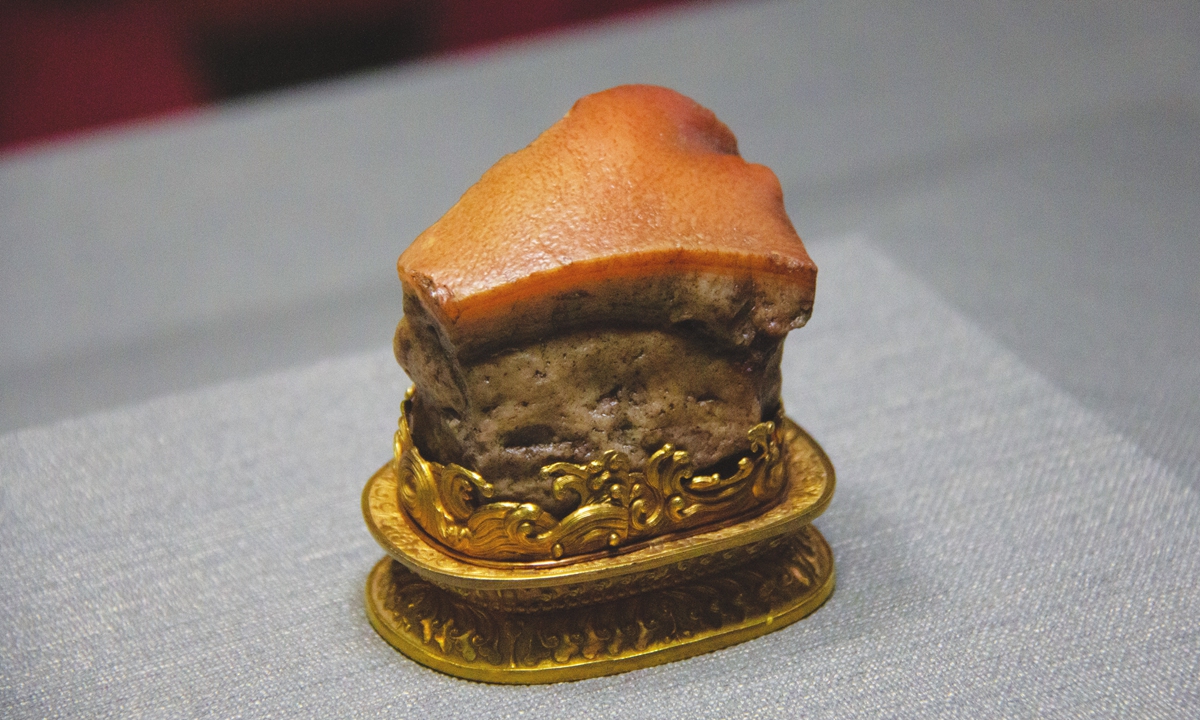
Taipei Palace Museum's Meat-Shaped Stone Photo: VCG
Window to the world
More than 420,000 people have visited the new Palace Museum in Hong Kong since its opening on July 3.
The branch venue is holding a special showcase of 900 precious cultural relics from the collection of the Palace Museum in Beijing as part of celebrations surrounding the 25th Anniversary of Hong Kong's return to the motherland. In Wang's eyes, this figure "reflects Hong Kong people's love for these cultural relics that carry excellent traditional Chinese culture. It also shows that they hope to learn more about traditional culture through them." As an important "platform and window," the Hong Kong Palace Museum plays an irreplaceable role in establishing the city as a center for overseas cultural and art communication.
"We not only hope to show the best of the traditional Chinese culture represented by the Palace Museum and its cultural relics, but also plan more cultural exhibitions with other countries and regions," said Wang.
The Hong Kong Palace Museum is now hosting a horse-themed exhibition featuring relics from China and France.
"It shows the different knowledge about horses from two different peoples, an important thing during the development of humanity. How our friends view them, how we represent them through artistic ways… similar themes like these can be brought together for exchanges," he added.
According to Wang, the Taipei Palace Museum and the Palace Museum in Beijing are family and there should be discussion and exchanges of ideas between colleagues at both institutions.
The two museums previously had frequent and in-depth exchanges, which have been temporarily suspended due to the impact of COVID-19. However, Wang said that with the normalization of pandemic prevention and control measures, the museums will further increase academic and cultural exchanges.
These exchanges can promote mutual understanding between scholars and even between the Chinese mainland and Taiwan, Wang said, adding that he hopes to have the chance to visit the Taipei Palace Museum soon.
"We share the same roots and so we are like brothers. The relics in Taipei come from the museum in Beijing," Wang said, noting that it is hoped that the Palace Museum in Beijing, the Taipei Palace Museum and the Hong Kong Palace Museum can jointly plan some exhibitions together in the future.
Wang also disclosed that the museum is now working on more exhibitions with countries like Austria, Italy, France, Afghanistan, Iran and Pakistan.

